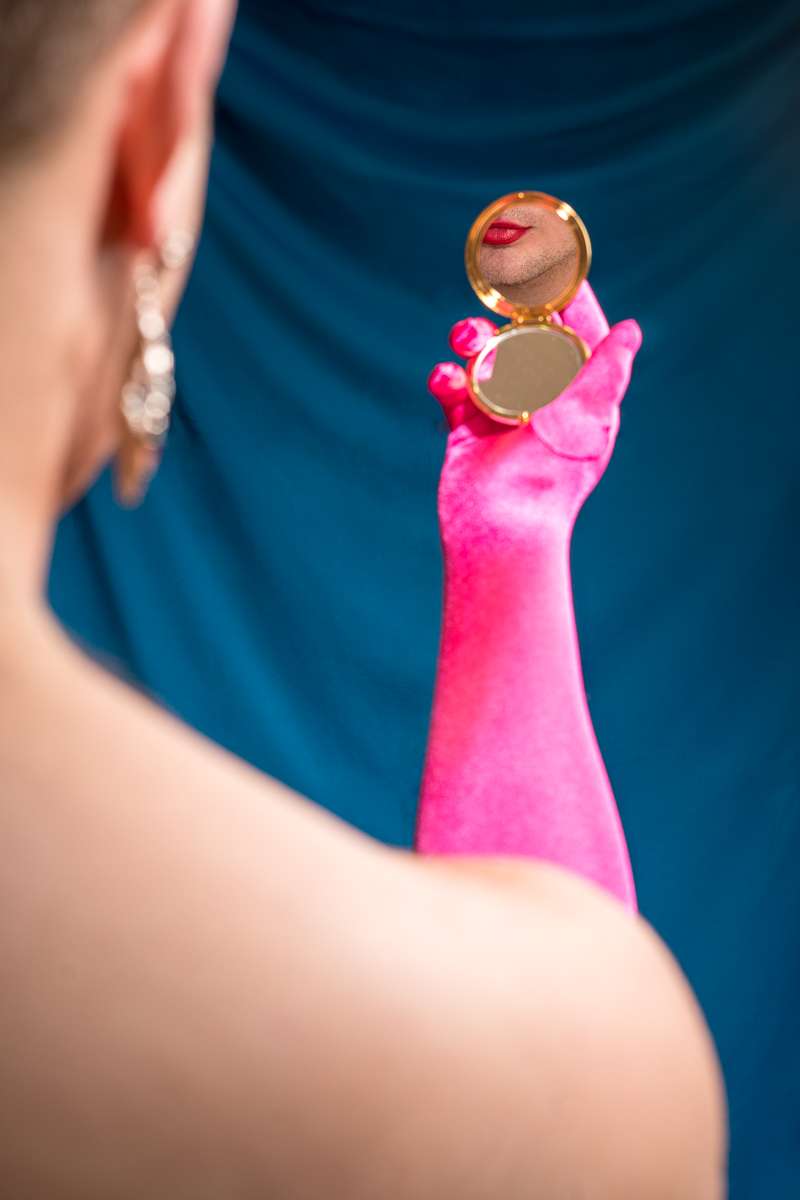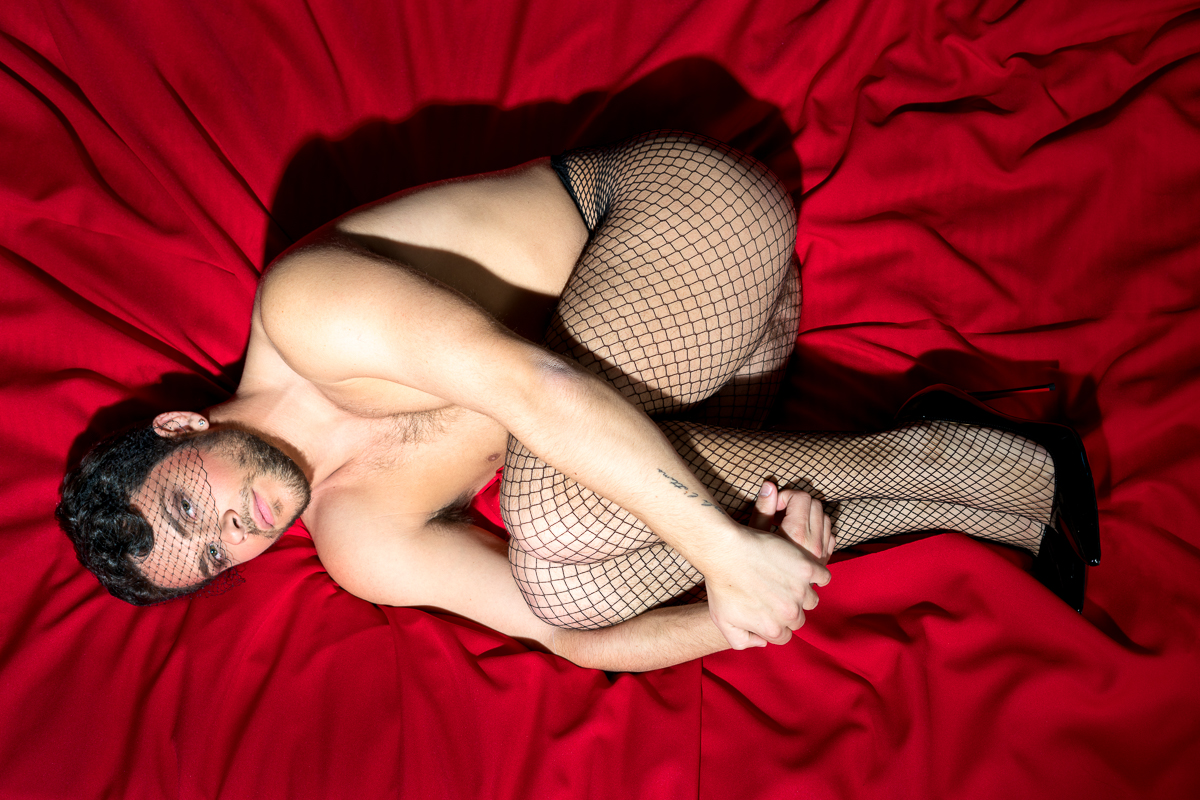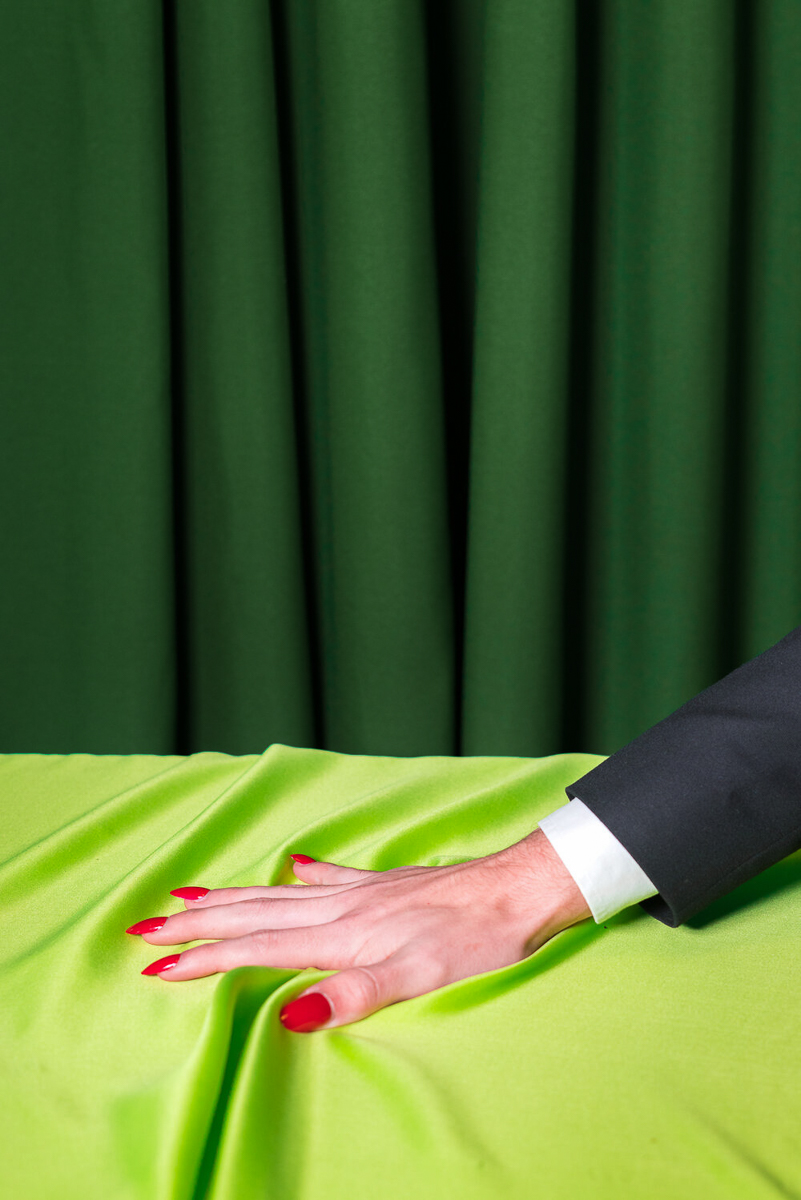































biography
Born in Rocky Hill, Connecticut, Stephen Gerrick (He/Him b. 1999) uses photography to produce colorful and graphically stylized portraits intended to subvert the stereotypical portrayals of the masculine male in history. Woven into his tableaus are references to the queer experience, art history and mythology, as well as an underlying conversation about gender representation and imagery. He often uses the juxtaposition, confrontation, and subversion of classic traditions of male and female portraiture (i.e. styling, posture, gaze and physical prowess) as vessels to mock the ways gender and identity have been portrayed. This being said, his thesis project is a celebration of queerness just as much as it is a critique of societal norms.
interview
Stephen Gerrick in conversation with Saige Schrater
SS: Where were you born and raised? How would you describe your childhood?
SG: I was born and raised in Rocky HIll, CT. My mom is a nurse and my dad, an insurance claims adjuster. Oddly enough, neither one was very creative, whereas I’ve loved art since pre-school—So much so that in elementary school I was constantly getting in trouble for forging hall-passes to skip recess and spend my extra time in the art room.
SS: When did you decide you wanted to go to art school?
SG: Like I said above, I have had a major interest in the visual arts ever since I was a child. However, it wasn't until I met my high school art teacher, Eileen Schnyder, that I learned the formal aspects of art-making and realized there was potential for me to make a career out of it.
SS: Why did you choose to study photography for undergrad?
SG: I chose photography because I wanted to get into the creative side of marketing and advertising and moreover to learn how to craft a successful and aesthetically sound image.
SS: What is your favorite, and least favorite part about studying photography?
SG: My favorite thing about photography is its ability to bring attention to the beauty of the mundane and otherwise overlooked parts of life. My least favorite part is how many people outside of the art world don't really recognize it as a true art medium and think anyone can do it because they have a 12 megapixel iPhone camera.
SS: What does your work aim to say, find out, or accomplish?
SG: My work is meant to challenge the visual stereotypes and expectations that infiltrate modern society. I am interested in the way clothing, and the lack thereof, communicate a sense of self and assert one's masculinity or femininity.
SS: Who are your biggest influences?
SG: Some of my biggest influences are Lisa Rivera, Ryan Pfluger, Robert Mapplethorpe, George Platt Lynes, Collier Schorr.
SS: You studied abroad, did this change the way you shoot? How?
SG: Studying abroad and not having easy access to strobes and a studio forced me to buckle down and pay more attention to the world around me. It was definitely a hard adjustment at first but It was a real awakening to the possibilities outside of the studio.
SS: How do you create your best work?
SG: I create my best work by doing a lot of planning ahead of time, figuring out every composition and pose I want to capture before my subject arrives. By planning the details it allows me to bring to life the shots I have in my head from the get-go. However, I often adapt in the moment when I see a chance to capture something beautiful and unexpected.
SS: How has your work changed during your time at MassArt?
SG: I have learned a lot more about composition and incorporating meaning into my work. Not to mention all of the artists I have been introduced to, such as James Bidgood, Robert Mapplethorpe, and Lisa Rivera who have had a major influence on my practice
SS: What do you see yourself doing after school?
SG: My current career goal is to move to a major city and get a job in advertising or marketing while continuing to do photography on the side.